|
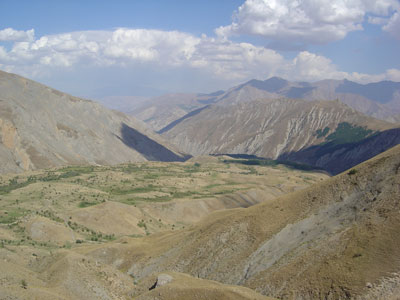 Qodshanes Plateau in the Hakkari mountains
Qodshanes, the historically famous mountain village with the former residence of the Assyrian patriarch Mar Shimun, is situated to the north of Hakkari town in SE Turkey. It is a magnificent site on a fertile plateau surrounded by high mountain peaks. Even today there is only a dirt road, a narrow track, leading to Qodshanes and the remote site cannot be visited without permission from the authorites in the city hall of Hakkari town.
There is however another way to get there - with a bit of luck and a little help from a friend, a local Kurdish guide. That man came from New Qodshanes or Konak, the Kurdish village in the mountains, a few miles from the old Assyrian site. We drove from the poor Kurdish outskirts of Hakkari town, following the long and winding sandy track that climbed to an altitude of approximately 2.000 metres.
It took us a couple of hours. And there it was at last - the Qodshanes plateau, the Nestorian Vatican of the Assyrian tribes, Mar Shimun's Christian citadel, separated from the outside world by rugged mountain tops and steep precipices.
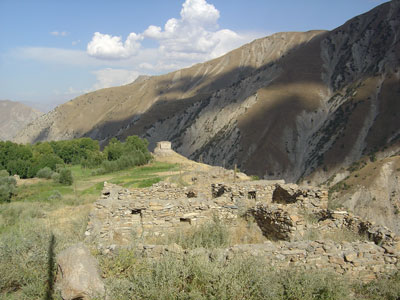 Ruins of Assyrian Qodshanes - Late Summer 2007
Old Qodshanes, once the renowned dwelling place of the Assyrian patriarch , is now completely in ruins. There is just one Kurdish guardian living nearby. He is supposed to look after the site and see to it that what is left of it doesn't get demolished or carried away to serve as building material elsewhere. Patriarch Mar Shimun's residence has been razed to ground level and one or two artificial slopes indicate the spot where the Assyrian burial grounds must have been. There are no tombstones left. I just found a couple of stone slabs. They must once have covered Assyrian graves, but now they are used as small bridges over a brook.
There is plenty of water on the plateau and all kinds of crops are grown in the fields close to the Assyrian ruins. Weeds and wild flowers amid the old stones, the dark shadows of white clouds drifting in the blue sky above the plateau, the deep silence of the past all around.
Eski Qodshanes on a golden afternoon, late summer of 2007.
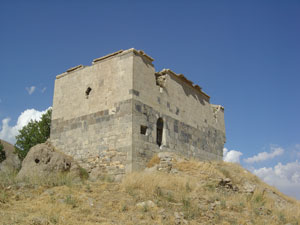 Nestorian Mar Shalita Church - Qodshanes
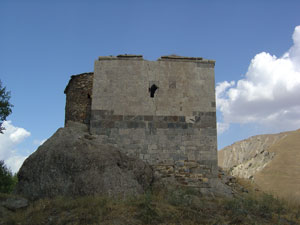 Mar Shalita - Late Summer of 2007
Patriarch Mar Shimun was murdered at the end of the First World War. What was the fate of the people of Qodshanes? Together with the whole Assyrian nation they fled from Hakkari and Ottoman Turkey and they resettled in the northern part of Iraq under British protection. But the problems with Kurds and Arabs went on and Qodshanes people eventually found a relatively safe home in the Al-Hasaka region on the Khabur river in Syria. Till today about 35 Christian villages create an Assyrian enclave in that Syrian desert plain. One of these tiny settlements is called Tell Hafian. Its present inhabitants are the descendants of the Assyrian refugees from Qodshanes. There is a church in Tell Hafian - it is called Mar Shalita.
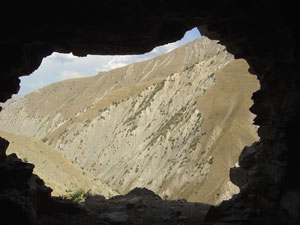 Paradise Lost - Hakkari mountains from Mar Shalita
A moving tale, told by Reverend Wigram in his book The Cradle of Mankind (1922) about the Assyrian nation. Reality was less romantic. Three years later Mar Shimun was shot and his Assyrian people - the Turks called them traitors, since Mar Shimun had declared war on Ottoman Turkey in 1915 - was never allowed to return to the native villages in the Hakkari mountains. Nowadays Qodshanes water makes Kurdish crops grow.
Text & illustrations - August Thiry
|

 Homeland
Homeland  Turkey
Turkey  Qodshanes in Hakkari
Qodshanes in Hakkari

 Homeland
Homeland  Turkey
Turkey  Qodshanes in Hakkari
Qodshanes in Hakkari